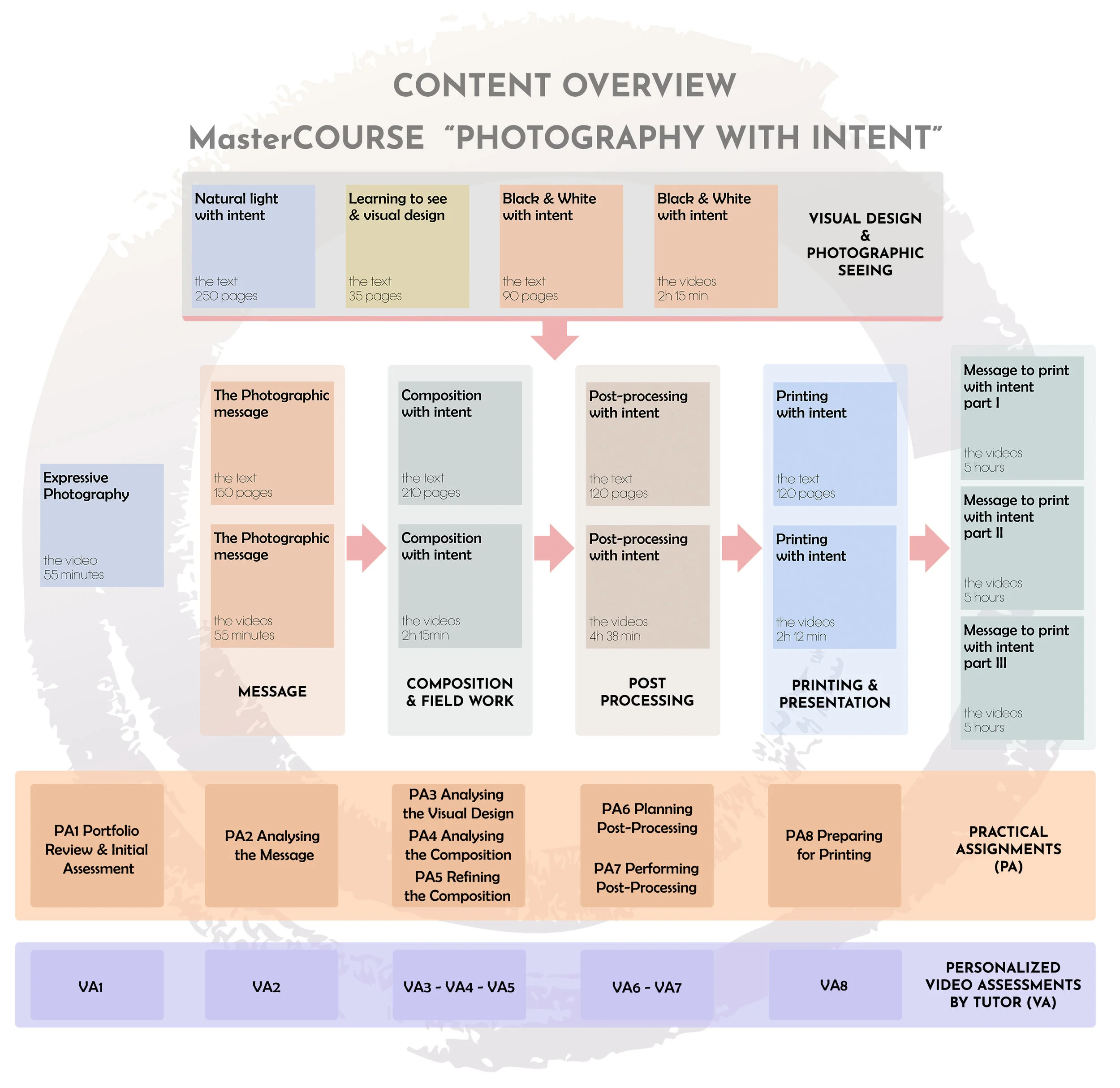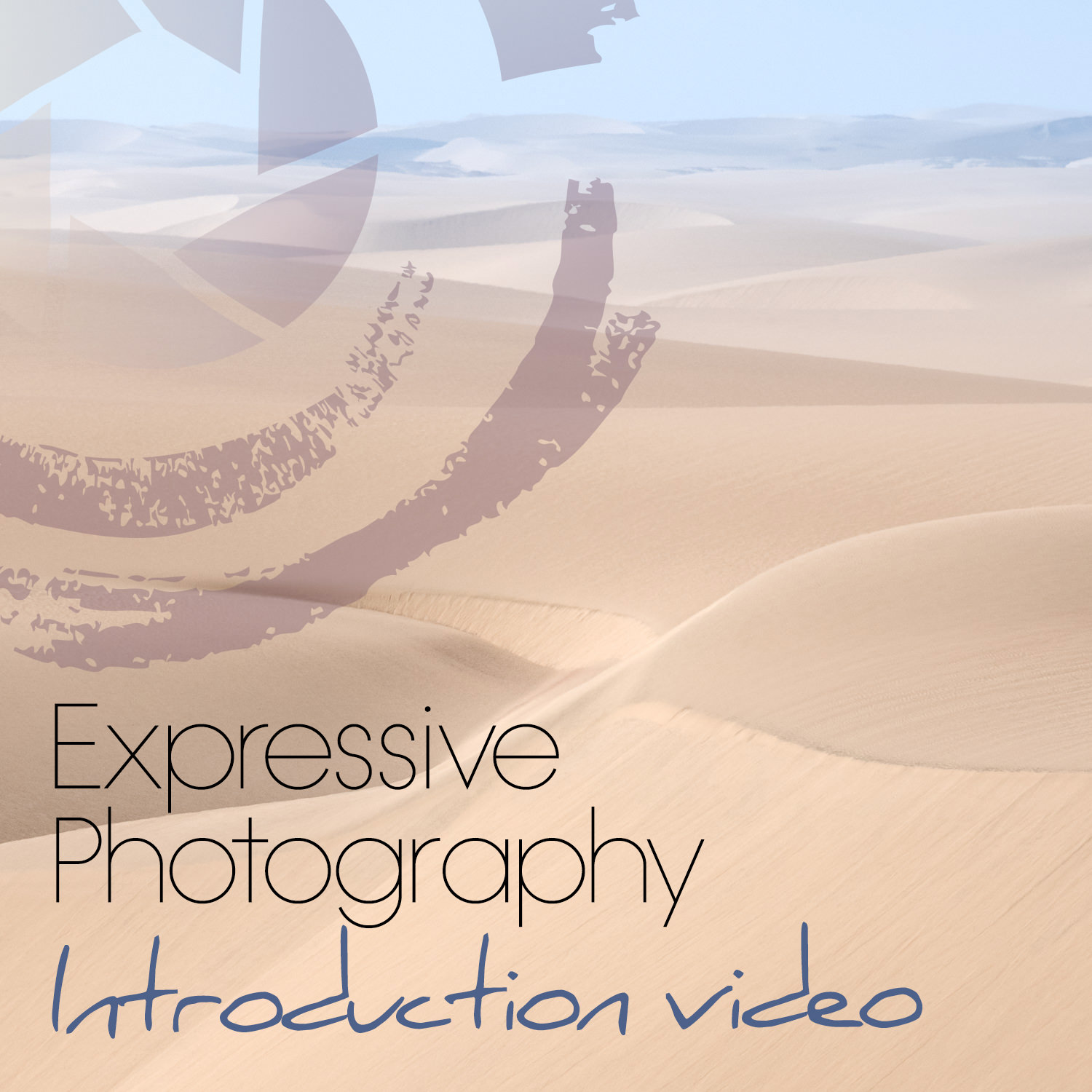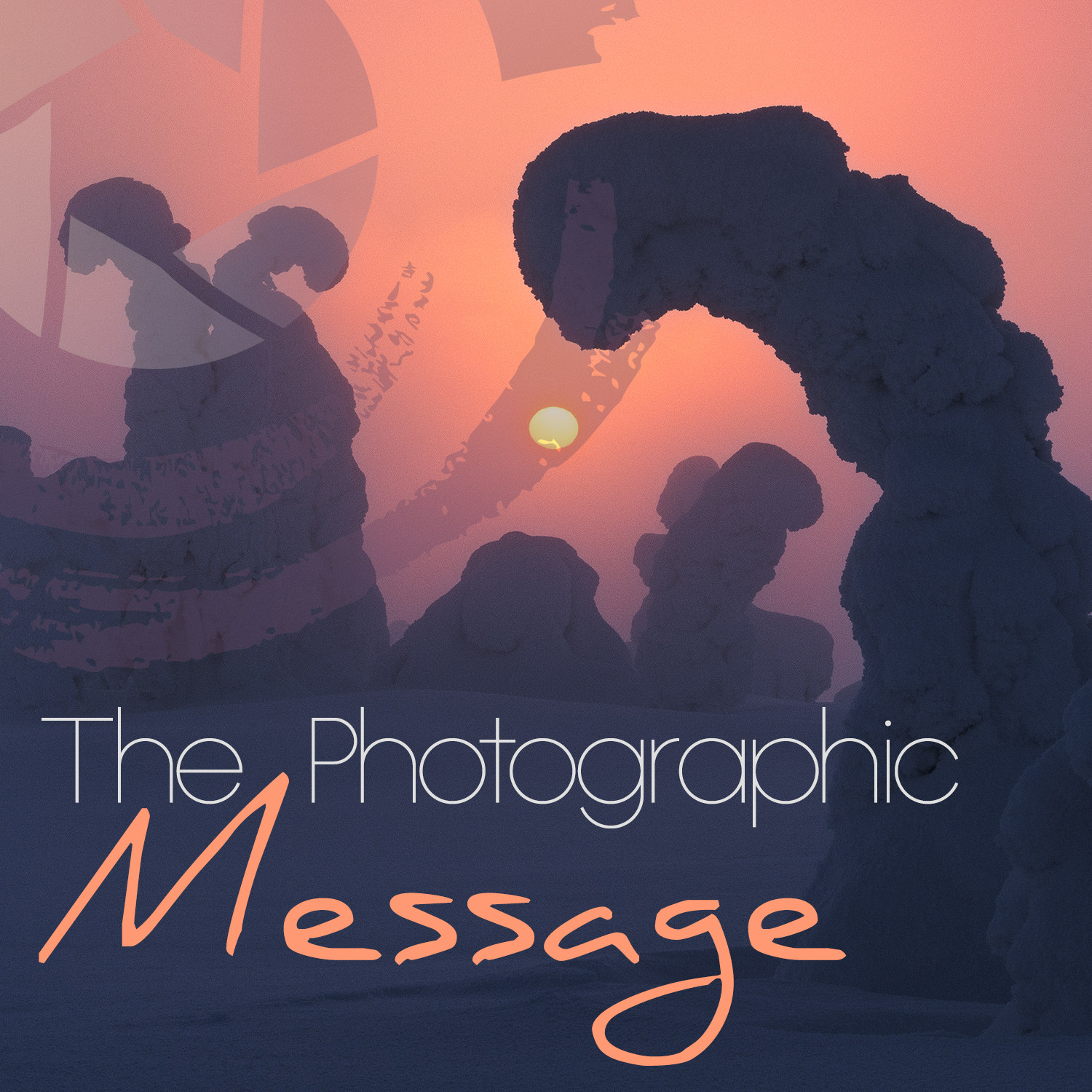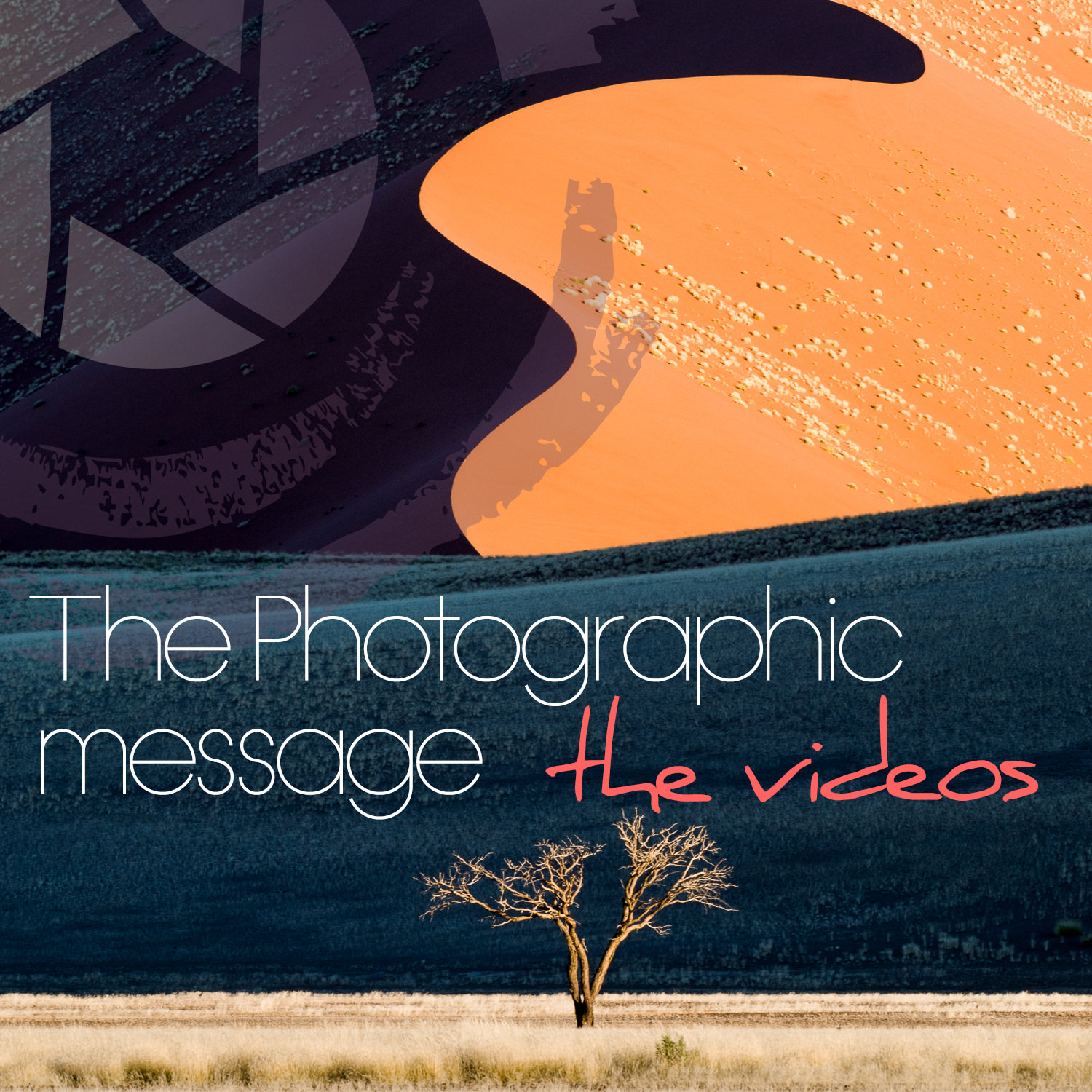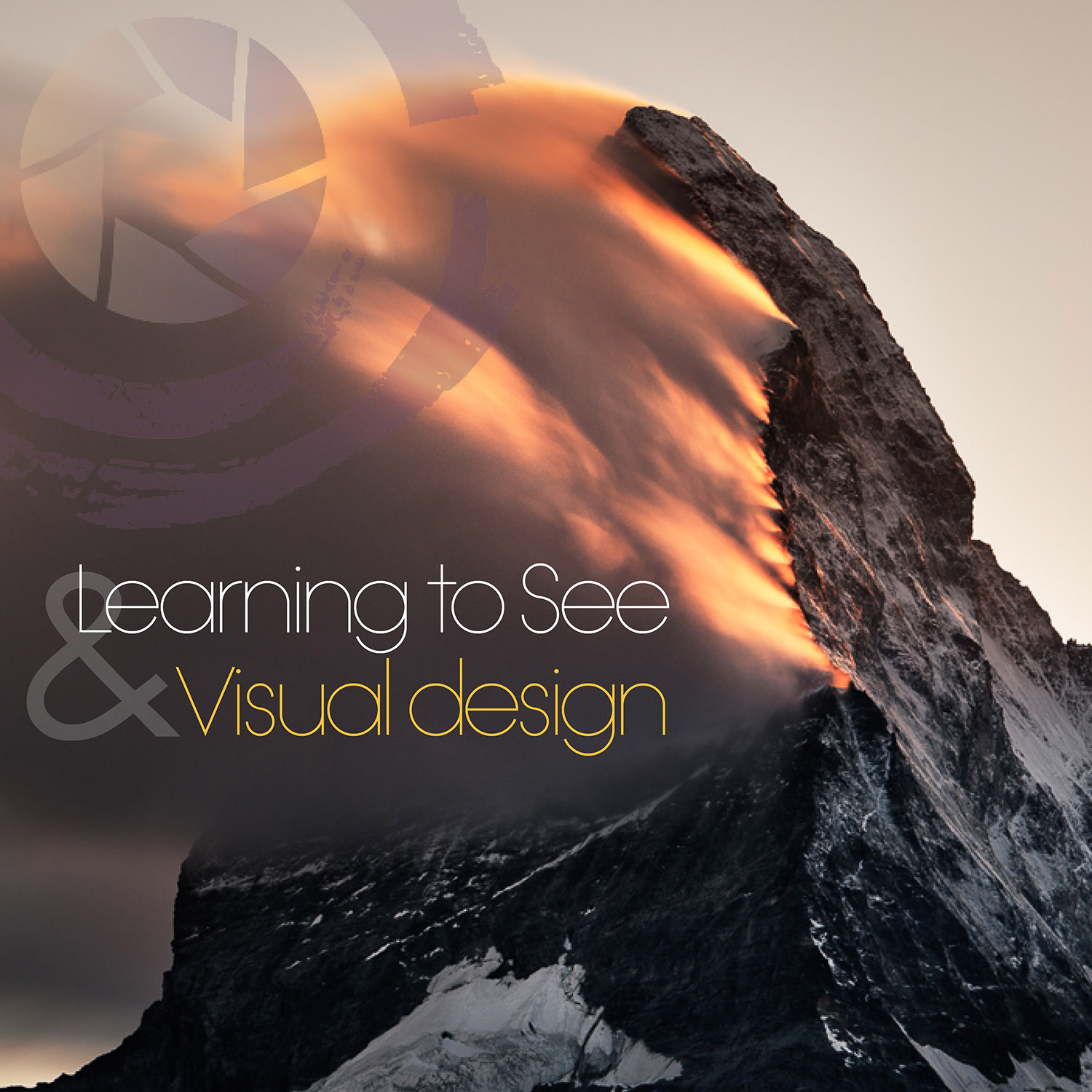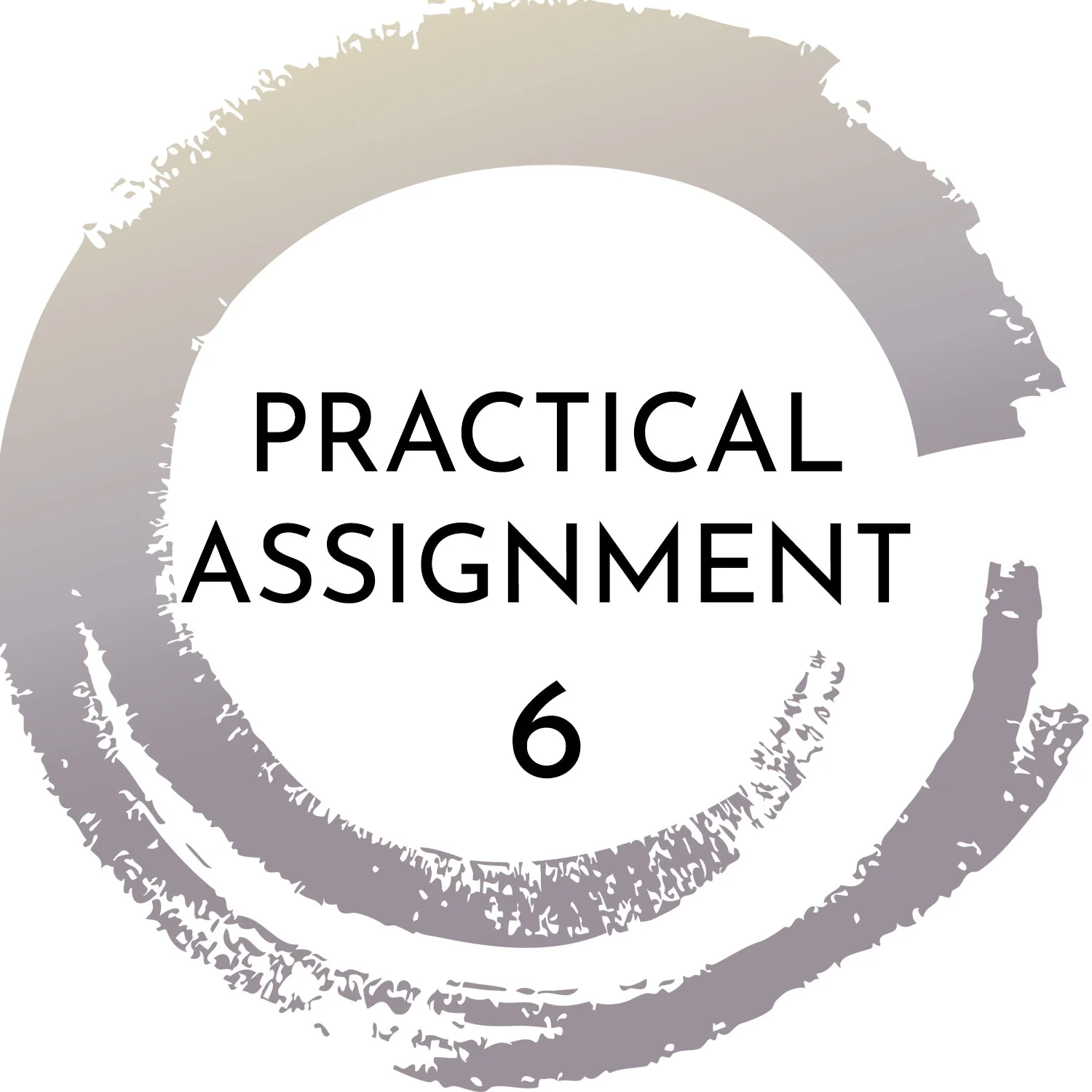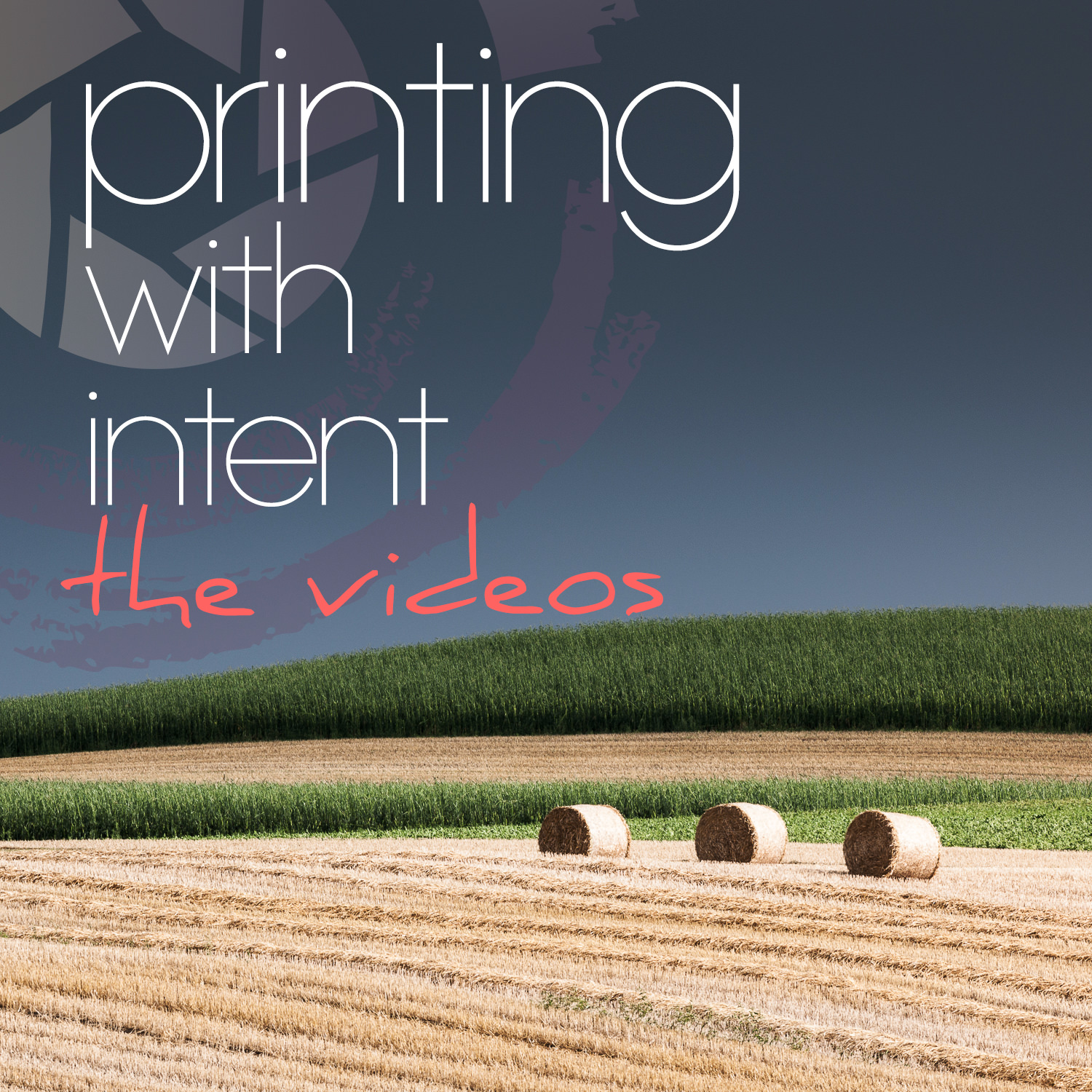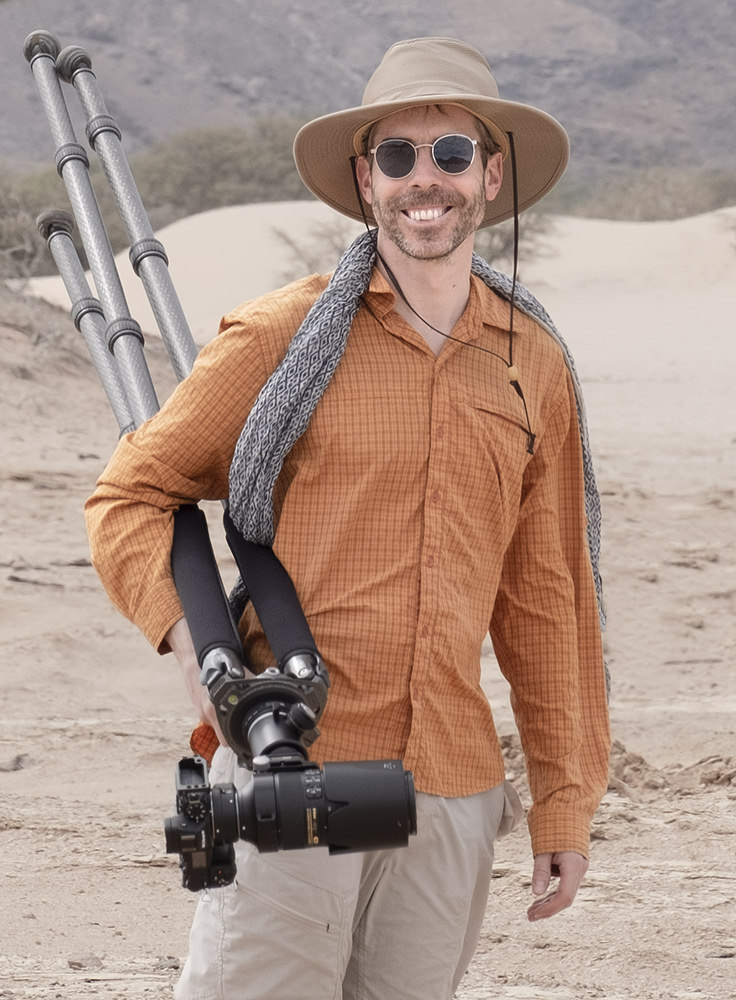16 INTERCONNECTED MODULES
ILLUSTRATED TEXT + VIDEOS + CASE STUDIES + SUGGESTED EXERCISES
When becoming one of the MasterCOURSE students, you are enrolling in a structured, coherent and comprehensive learning program. It will not only hugely improve your theoretical, practical and critical skills when it comes to expressive photography, it will also provide you with a holistic view of all the different steps involved. Indeed, light, visual design, composition, post-processing, printing and presentation are not independent steps, but an extension of each other:
The message ignites the expressive process
Natural light defines visual design
Visual design informs composition
Post-processing in the studio becomes the extension of composition in the field
Final printing and presentation of the image is the logical culmination of the whole process.
The unique and valuable character of the MasterCOURSE resides not only in the quality of the different isolated modules it consists of, but in the way they are linked together. Just like in good photographic composition, one plus one is more than two.
PRACTICAL ASSIGNMENTS & PERSONALIZED FEEDBACK
The MasterCOURSE is truly a mentoring program, with personalized guidance, feedback and support.
The MasterCOURSE will start with a Portfolio Review and personal assessment of your work by your tutor. Then, throughout the course, you will apply what you have learned by means of several Practical Assignments (PA) that will cover the whole creative process, from message to print. These Practical Assignments will allow you the possibility to apply what you have learned to your own photography.
Upon submission of each Practical Assignment, your tutor will provide you with personalized feedback, guidance, and support by means of Video Assessments (VA) that you will be able to review in all flexibility.
At the end of the MasterCOURSE, you will receive a Diploma certifying your achievement and a printed portfolio of the body of work we have put together throughout the learning program. You will also receive a final written assessment from your tutor based on your performance in the practical assignments.
ACCESS TO VIDEO-ASSESSMENTS
When you enroll in this learning program, you also become part of our private and exclusive MasterCOURSE community of expressive and creative photographers.
As a member of the MasterCOURSE, you will also have access to the Video Assessments of other peer students. This will provide you with hundreds of hours of enlightening videos containing a ton of insight for your own photography!
The learning material will never stop growing, since more and more videos will be added as more students join the program. These Video-Assessments will show you how other creative photographers, working with other subjects and with different visual styles, use photography as a means of personal expression. Therefore, all the comments made by the Tutors to other students will be applicable to your own photography. This is, literally, a mine of learning material, with hundreds of analyzed case studies waiting for you.
As a student of the MasterCOURSE, you will also become eligible to other learning programs not open to the general public, like our MasterPROJECT.
FLEXIBLE & AT YOUR OWN PACE
The MasterCOURSE is a flexible learning program that you can follow at your own pace. There are no fixed dates to finish each module and to submit each Practical Assignment, and you can adjust your progression to your agenda. Your tutor will adapt to your rhythm so that you decide when you fix your meetings with him and receive his Assessments as you progress.
For someone with a normal amount of time available, this course might take around 1 year to be completed. This can be done by allotting a few hours every week, enjoying the process without it becoming a burden. You can also finish the Master COURSE in six months if you do not sleep at all! It is all up to you. What is important is that this MasterCOURSE has been designed not only to help you become a much better photographer but also to let you fully enjoy the learning process and learn at your own pace, with all flexibility.
Once you enroll in our MasterCOURSE, you will have two full years of access to the MasterCOURSE content area. Because the MasterCOURSE has been designed to be covered in one year for most people, you have plenty of time to fully go through the course and the Practical Assignments, even at the slowest pace, without having to stress. In these 24 months you should have covered the different Practical Assignments, if you want to receive the corresponding Personalized Assessments of your tutor, as well as the final Diploma, printed Portfolio and final written Assessment at the end of your studies. Bear in mind that from day one you will be able to download all the PDFs, so that means you will, in any case, keep all that material with you when the twenty-four months expire. In order to keep the videos up-to-date and limit the hassle of downloading heavy files, videos can be viewed in streaming.
After the 24 months, there will be the possibility to remain as Alumni, having access to all the updates and extensions of the MasterCOURSE material, and also to the additional Video-Assessments of other students. You will also be able to enroll on our MasterPROJECT, an online learning program only open to our MasterCOURSE students.
DETAILED CONTENT OF EACH MODULE
1. EXPRESSIVE PHOTOGRAPHY
Video of 55 minutes
Available in Streaming
English Language
Animations, quotes & examples
1. EXPRESSIVE PHOTOGRAPHY
VIDEO CONTENT

PERSONAL EXPRESSION THROUGH PHOTOGRAPHY
In the video presentation “Expressive Photography”, which serves as an introduction to the MasterCOURSE “Photography with Intent,” we undertake a rational deconstruction of the different elements that collide when an expressive and personal photograph is created. Certainly the subject matter we photograph is essential, as is the light that falls on it. But there are many more elements that mix and mingle when a creative individual uses a camera to express himself or herself creatively.
Through a full hour, we will review these essential elements in the order in which they arise during the creative process. The intention is to show how all our images are created by the contribution of a certain number of different factors, some of them external to the photographer and some others inherent to the creative person behind the camera. Then, we will highlight how the contribution of each different ingredient can vary from one image to another.
PA1: PORTFOLIO REVIEW & INITIAL ASSESSMENT
At this point, you will prepare a selection of 50 to 100 images of your work that you think is representative of your personal style and centers of interest. These images do not need to be the most aesthetically beautiful ones, nor the most technically difficult to achieve. Instead, you should favour for this selection images where there is a good dose of personal “voice”. That is, images where a certain idea, message, emotion or feeling is present in your opinion. If you have doubts about this choice, just add the images that feel “special” and meaningful to you.
Once the selection is made, you will meet your tutor for an online 1-to-1 session of around 1 to 1.5 hours. He will provide an initial assessment of your work, finding patterns and coherent relationships between the different images and identifying with you traits that define your personal vision and way of seeing and reflecting the world through your photography.
Then, during this session a collection of 10 images will be chosen together with your tutor. These images are not supposed to constitute a “project” or a “body of work”. In fact, it might be a good idea to choose images that convey very different messages, display different visual design, adopt different styles and use different compositional registers. These 10 images will ideally be used all along the subsequent Practical Assignments as you progress through the MasterCOURSE, and for this reason, we might tackle many more aspects of Expressive photography when dealing with as many different images as possible.
FINDING THE MESSAGE & THE INTENT
The module “The Photographic Message” tackles the beginning of the creative journey of the photographer. Inspiring and thought-provoking text accompanied by more than fifty case studies of images made by the author where the message is analyzed and explained. A must-have for anyone wanting to use photography as a mirror, not only as a window...
When we discuss personal photography, we refer to photography being used with the purpose of saying something that reveals the way the photographer connects, understands, and interprets the world. We are all different and unique, and certainly each of us has a very distinct way of relating to the world and its inhabitants, of processing the stimuli we receive, of thinking and feeling, and of making connections and finding conclusions. When we use photography with the intent of showing others (and ourselves) that personal way of connecting with the world, we are not just using photography to show how the world looks to us, but mostly how it feels to us.
Contrary to what the term might imply, personal expressive photography is not the result of a unilateral, individual effort. It is more the collaborative result of a dialogue, a conversation among the photographer, the subject matter being photographed, and the observer of the final image.
CONTENT:
Introduction
Part I: Setting the Intent
Part II: Finding the Message
Part III: Fifty-One Case Studies
Part IV: Suggested Exercises
3. THE PHOTOGRAPHIC MESSAGE - VIDEOS
Video of 50 minutes
Available in Streaming
English Language
Animations, quotes & examples
3. THE PHOTOGRAPHIC MESSAGE
VIDEO CONTENT

COMMUNICATING THROUGH DIFFERENT CHANNELS
If the primary objective of personal expressive photography is to convey the intent and message of the photographer, this communication can take place at various levels. Every single image can communicate its message through different channels. Through some of these channels, the voice of the photographer is clear and is heard by the conscious mind of the observers. However, when other layers of communication are used, the message of the photographer is whispered through the subconscious mind of the observers, affecting the way they understand and decipher the visual message into a concept, an emotion, or a mood.
Depending on the intent we select for our images, we might use only one layer of expression in our pictures. Most of the time, however, we will end up using a combination of different channels of communication. This will not only deliver a more profound message but also keep the attention of the viewer for longer, provoking more intense resonances, more emotional connotations, and allow us, photographers, to exploit all the communication potential of visual imagery.
As mentioned by Francis Hodgson, when we know how to inject different layers of signification into our images, we stop making images of something and start making pictures about something.
YOU ARE ABOUT TO BECOME A BETTER PHOTOGRAPHER!

PRACTICAL ASSIGNMENT - PA2
PA2: “Analysing the Message”
Assignment to be submitted according to detailed instructions
Video Assessment by your tutor with personalized feedback
ANALYSING THE MESSAGE
& VIDEO ASSESSMENT

PA2 - ANALYSING THE MESSAGE
For this Practical Assignment, you will follow a method and system elaborated by us. The method will provide you with a series of logical steps, taking you by the hand and helping you:
Identify the message in your images
Clarify the intent and the reason why you make your images
Analyze the different layers of signification found in your images
Inform your photographic practice
Identify patterns and universal underlying meanings in your images
Identify emotional connotations associated to your images
We will provide you with an structured template document that you will use to analyse a group of your images identified with your tutor during the preliminary Portfolio Review (PA1).
Upon submission of this Practical Assignment PA2, your tutor will assess the results, providing his feedback and guidance by means of the Video Assessment VA2 that you can review in all flexibility.
As a student of the MasterCOURSE, you will be able not only to receive the Assessment to your own Assignments. You will also have access to the Video Assessments of other peer students.
This will provide you with hundreds of hours of enlightening videos containing a ton of insight for your own photography!
NATURAL LIGHT, THE RAW MATERIAL
Everybody can see the light, but for us photographers, seeing the light is not enough. We need to understand it, breathe it, and feel it. We need to develop a subconscious approach, a sensitivity to light so developed that we are able to realize when light conditions evolve even without paying attention to them. We also need to be able to predict how light is going to behave, how it is going to change. Not only that, we also need to develop an awareness and a knowledge about how natural light (or light in general) transforms the subject matter, how it is reflected, diffused, and absorbed.
In this module “Natural Light with Intent”, we will cover most of the different situations outdoor photographers approach when working with natural light. Our goal will be to help you understand the different qualities of light and how they influence what we see and also how we feel about what is seen. We will analyze the different nuances of natural light, how weather shapes it, and how to plan and react to light when taking photographs in the field. We will also discuss the coherence between intent and light, and how every single light condition can be ideal for a certain kind of message, emotional connotation, and subject matter.
Resist the temptation to assume you know it all about natural light. Light is one of the most magical mysteries of the universe and the very raw material of photography. Knowing it all is impossible, but this thorough and comprehensive module will increase your understanding and appreciation for natural light more than you would expect!
CONTENT:
Introduction
Part I: Painting with light
Part II: Light and the camera
Part III: Characteristics of the light
Part IV: Natural light conditions
Part V: Natural light in different environments
Part VI: Planning with natural light
Part VII: Matching light and subject/mood
Part VIII: Suggested exercises
DO YOU REALLY SEE?
Looking is not seeing - Engaging with the world as a photographer means we need to keep not only our eyes open, but also our mind and soul.
Photographing the world means making statements about it, and if we want our statements to be meaningful, we need to fully absorb what is around us, understand the way it affects us, and then explore ways to communicate that effectively through photography. This is why learning to see, and learning how the camera sees, will not only make you a better photographer, but will also make you live in a more intense way.
Photography is a vehicle for ideas, messages, concepts, and feelings. In order to convey them we use the visual language. As with spoken languages, the visual language can be learned, as it is ruled by visual grammar and syntax; this we know as visual design.
Tone and color are the origins of all visual design. Tonal and color contrast help us see edges between elements and create the secondary elements of visual design that will be covered in the module “Learning to See & Visual Design”. Points, lines, shapes, textures, and depth are the raw materials and building blocks of all visual artists who use the visual language in order to transmit their messages, concepts, feelings, and emotions. Each of these secondary elements has its own characteristics, and in this Module, we will study how to use them effectively in our photographic work.
CONTENT:
Introduction
Part I: Learning to See
Part II: Introducing Visual Design
Part III: Suggested Exercises
PRACTICAL ASSIGNMENT - PA3
PA3: “Analysing the Visual Design”
Assignment to be submitted according to detailed instructions
Video Assessment by your tutor with personalized feedback
ANALYSING THE VISUAL DESIGN
& VIDEO ASSESSMENT

PA3 - ANALYSING THE VISUAL DESIGN
Like for all Practical Assignments, this time you will also follow a method and structure provided by us, that will “take you by the hand” and help you develop a critical awareness of how your images are built, why and what effect and affect that creates in your images.
For this Practical Assignment, you will continue to analyze the same set of images you worked with on the PA1 and PA2, this time identifying the Visual Design and the way it contributes to:
Deliver, influence or nuance the message
Provide emotional connotations
Affect the visual experience in the viewer
Affect depth and balance
etc
Upon submission of this Practical Assignment PA3, your tutor will assess the results, providing his feedback and guidance by means of the Video Assessment VA3 that you can review in all flexibility.
As a student of the MasterCOURSE, you will be able not only to receive the Assessment to your own Assignments. You will also have access to the Video Assessments of other peer students.
This will provide you with hundreds of hours of enlightening videos containing a ton of insight for your own photography!
COMPOSITION IS THE STRONGEST WAY OF SEEING (E.Weston)
Composition is simply the process through which the photographer turns idea into image. Good composition is making use of the visual design so that every single part of the image adds to the final message, working in unison with coherence toward a particular and deliberate intent from the photographer.
The expressive possibilities of visual design cannot be understood as just the sum of each of the individual visual elements. Instead, when using the visual language, the whole is much more than the sum of the parts, and the expressive quality of a group of visual elements, when chosen and arranged correctly, will strongly reverberate as visual resonances. In good composition, one plus one is more than two. In bad composition, one plus one is zero.
Good photographers, when in the field, dance with the landscape, camera in hand, paying attention to how the visual building blocks of the scene in front of them change, striving to find that position and exact moment where and when every single element in the scene just makes sense with all the rest and pushes forward the desired visualization, the searched-for emotion, and the elusive concept that materialized in the mind of the photographer when confronted with the scene.
In the module “Composition with Intent”, we cover the whole creative process when working in the field or in the studio, camera in hand.
CONTENT:
Introduction
Part I: Why compose? - Missions of composition
Part II: The Art of composition
Part III: Composition deconstructed
Part IV: Using the camera
Part V: Typical problems in composition
Part VI: Composition styles
Part VII: Suggested exercises
PRACTICAL ASSIGNMENT - PA4
PA4: “Analysing the Composition”
Assignment to be submitted according to detailed instructions
Video Assessment by your tutor with personalized feedback
ANALYSING THE COMPOSITION
& VIDEO ASSESSMENT

PA4 - ANALYSING THE COMPOSITION
Like for all Practical Assignments, this time you will also follow a method and structure provided by us, that will “take you by the hand” and help you develop a critical awareness of how your images are composed (made in the field), why, and particularly what effects and affects that creates in the expressive load of your images.
In the PA3, you analyzed the Visual Design. Now, on the PA4, you will continue this exploration, this time thinking and analyzing how the work in the field (Composition) has affected that visual design, and also has shaped:
The nuances of the message
The expressive register
The emotional connotations
The visual style
The visual experience in the viewer
etc
Upon submission of this Practical Assignment PA4, your tutor will assess the results, providing his feedback and guidance by means of the Video Assessment VA4 that you can review in all flexibility.
As a student of the MasterCOURSE, you will be able not only to receive the Assessment to your own Assignments. You will also have access to the Video Assessments of other peer students.
This will provide you with hundreds of hours of enlightening videos containing a ton of insight for your own photography!
COMPOSITION, EXPLAINED
More than sixty different images made all over the world are analyzed and commented on in depth throughout two hours and fifteen minutes of fully animated videos.
These videos tackle all the elements discussed in the written module of “Composition with Intent”. Mainly, we focus on Visual Design, Visual Dynamics, and Visual Relationships and how they affect the emotional connotations, the overall message, and the visual experience for the observer. Particular attention is also paid to balance, depth, and the influence of timing on the final result.
The videos “Composition with Intent” will help you see and understand visual imagery in a whole new and different way.
PRACTICAL ASSIGNMENT - PA5
PA5: “Refining the Composition”
Assignment to be submitted according to detailed instructions
Video Assessment by your tutor with personalized feedback
REFINING THE COMPOSITION
& VIDEO ASSESSMENT

PA5 - REFINING THE COMPOSITION
Like for all Practical Assignments, this time you will also follow a method and structure provided by us, that will “take you by the hand” and help you develop a critical awareness of how your images are composed (made in the field), why, and particularly what effects and affects that creates in the expressive load of your images.
In the PA3 and PA4, you analyzed the Visual Design and the Composition of your images. With this Practical Assignment 5, you will follow a method provided by us that will help you refine your Composition in a convergence process of reduction. You will be invited to analyze the way the message, the expressive power of your images and the emotional connotations shift in the process. By measuring these shifts against the original message analyzed in the PA2, this exercise will help you identify the “real” intent and message of your images, and ideally enhance it and reinforce it. This exercise will also help you hone your compositional skills, allowing you to say more with less and inform the way you approach the field work for your future images.
Upon submission of this Practical Assignment PA5, your tutor will assess the results, providing his feedback and guidance by means of the Video Assessment VA5 that you can review in all flexibility.
As a student of the MasterCOURSE, you will be able not only to receive the Assessment to your own Assignments. You will also have access to the Video Assessments of other peer students.
This will provide you with hundreds of hours of enlightening videos containing a ton of insight for your own photography!
YOU ARE ABOUT TO BECOME A BETTER PHOTOGRAPHER!

POST-PROCESSING AS AN EXTENSION OF COMPOSITION
Post-processing should not be considered a separate step in photography, but rather as the continuation, or should we say culmination, of a whole photographic process that started the moment we had an idea in our mind that we wanted to capture in a photograph.
The most important thing in post-processing is to know what is the intent, mood, and message we want for the final photograph, to be able to see in our mind’s eye the final photograph the way we want it, and then to know in advance which adjustments of tone, contrast, micro-contrast, and color must be done in order to get as close as possible to that vision. Once we know this, the tool we use is irrelevant.
The module “Post-Processing with Intent” and the corresponding videos will particularly focus on the WHY of post-processing, rather than just on the HOW, something that is seriously lacking in most courses and books about post-processing.
CONTENT:
Introduction
Part I: Post-processing goals
Part II: The process of post-processing
Part III: Case study - Using Adobe Lightroom
Part IV: Introducing the videos
Part V: Suggested Exercises
PRACTICAL ASSIGNMENT - PA6
PA6: “Planning the Post-Processing”
Assignment to be submitted according to detailed instructions
Video Assessment by your tutor with personalized feedback
PLANNING THE POST-PROCESSING
& VIDEO ASSESSMENT

PA6 - PLANNING THE POST-PROCESSING
Post-Processing is first planned in our head. Then, the tool we use is secondary. With this Practical Assignment, we will help you analyze what the image demands in terms of Post-Processing, where, and for what reason. Guided by the original message identified in the PA2 and refined in the PA5, you will plan Post-processing in order to enhance the visual design analyzed in the PA3 and the composition analyzed in the PA4 by means of detailed instructions and method. The result of this Practical Assignment PA6 will inform the next step, where you will make use of your Post-processing tool of choice. This Practical Assignment will be useful even if you decide to print your images in the traditional darkroom!
Upon submission of this Practical Assignment PA6, your tutor will assess the results, providing his feedback and guidance by means of the Video Assessment VA6 that you can review in all flexibility.
As a student of the MasterCOURSE, you will be able not only to receive the Assessment to your own Assignments. You will also have access to the Video Assessments of other peer students.
This will provide you with hundreds of hours of enlightening videos containing a ton of insight for your own photography!
4.5 HOURS OF POST-PROCESSING VIDEOS
Knowing what a slider can do is very important - brighter, darker, more contrast, less contrast, more detail, less detail, etc. - but the key to successful processing not only relies on the knowledge of what the sliders do and how they affect the look of your image, but also on knowing when you like what you see, or, if not, how to use the available tools to make the file look the way you want it to!
Total duration of videos: 4 hours 28 minutes
Part I - Introduction - 43 minutes
Part II - Post-processing and Mood - 1 hour 24 minutes
Part III - Complementing the Composition through Post-processing - 1 hour 18 minutes
Part IV - Creating balance through Post-processing - 19 minutes
Part V - Creating depth through Post-processing - 53 minutes
PRACTICAL ASSIGNMENT - PA7
PA7: “Performing the Post-Processing”
Assignment to be submitted according to detailed instructions
Video Assessment by your tutor with personalized feedback
Your files processed by your tutor for comparison and analysis
PERFORMING THE POST-PROCESSING
& VIDEO ASSESSMENT

PA7 - PERFORMING THE POST-PROCESSING
Informed by the Practical Assignment PA6 you did and the feedback provided by your tutor in the Video Assessment VA6, you will now accomplish the Post-Processing by using your tool of choice: Adobe Lightroom, Photoshop, Capture 1, etc.
Upon submission of this Practical Assignment PA7, your tutor will assess the results, providing his feedback and guidance by means of the Video Assessment VA7 that you can review in all flexibility. On this VA, your tutor will process himself your files, respecting your intent and message, and send them back to you so that you can compare them with the result of your Assignment.
As a student of the MasterCOURSE, you will be able not only to receive the Assessment to your own Assignments. You will also have access to the Video Assessments of other peer students.
This will provide you with hundreds of hours of enlightening videos containing a ton of insight for your own photography!
MASTER COLOR MANAGEMENT & PRINTING, AT LAST
Printing makes possible that final leap that makes a photograph exist, and that, in today’s virtual world, is more important than ever before. It is not only a last step of the photographic process like in the old days, but also the only way to guarantee we have indeed created something.
In digital fine art printing, we open the door to a whole new universe. Aspects like color management, inks and paper, linearization and color calibration, printers and soft proofing need to be understood and mastered. The apparent obscurity and esoteric qualities of all these concepts have traditionally kept away most photographers, shy to open that door.
This comprehensive module will teach you everything in a clear way. Color management will not be a mystery for you anymore, and you will be able to obtain prints that look exactly like you expected them to look.
The module “Printing with Intent”, intense and thorough, is aimed not only for those who want to print at home, but also for those who want to send their images to laboratories for printing.
CONTENT:
Introduction
Part I: The perfect print - sharpness
Part II: The perfect print - Accurate colours and tones
Part III: Printing the image
Part IV: Paper and presentation
Part V: Appendix - Printing at a lab - Common problems when printing
Part VI: Introducing the videos
MORE THAN 2 HOURS OF POST-PROCESSING VIDEOS
With the videos “Printing with Intent” you will see practical examples of preparing files for printing, resizing, sharpening, soft-proofing, and simulating different papers and media. We will also cover from A to Z the preparation for printing by using Adobe Lightroom and Adobe Photoshop. To end with, we will also show you an example of how to calibrate a monitor and how to obtain the profile ICC of a certain printer and paper.
Total duration of videos: 2 hours 15 minutes
Part I - Calibrating the monitor - 20 minutes
Part II - Printer profiling - 13 minutes
Part III - Printing with Adobe Lightroom - 47 minutes
Part IV - Printing with Adobe Photoshop - 53 minutes
PRACTICAL ASSIGNMENT - PA8
PA8: “Preparing for printing”
Assignment to be submitted according to detailed instructions
Video Assessment by your tutor with personalized feedback
PREPARING FOR PRINTING
& VIDEO ASSESSMENT

PA8 - PREPARING FOR PRINTING
For this Practical Assignment, you will review your post-processed images and prepare them for printing. Your tutor will provide you with several ICC profiles, corresponding to different papers. With this ICC profiles, you will:
Decide on which paper they should be printed, according to message and intent
Soft-proof the files and see the impact of the different media
Identify the best rendering intents
Pre-tweak the image files for optimum printing (pre-press)
Resize them and sharpen the files for a given size, in coherence with the message and intent
Produce the ready-to-print files that you would send to a lab
Upon submission of this Practical Assignment PA8, your tutor will assess the results, providing his feedback and guidance by means of the Video Assessment VA8 that you can review in all flexibility. Then, your tutor will print all your images and send them to you as a beautiful portfolio.
As a student of the MasterCOURSE, you will be able not only to receive the Assessment to your own Assignments. You will also have access to the Video Assessments of other peer students.
This will provide you with hundreds of hours of enlightening videos containing a ton of insight for your own photography!
YOU ARE ABOUT TO BECOME A BETTER PHOTOGRAPHER!

THE PARTICULAR LANGUAGE OF MONOCHROME
Mystery, timeless character, mood, ethereal qualities, simplification, departure from reality... These are just some of the reasons why photographers still produce wonderful images where color is absent.
More so than ever, we have complete creative control at our fingertips when it comes to Black-and-White Photography - from visualization, visual design & composition, through technical and creative capture to powerful and unique creative processing on our home computers.
In this module, we will review many of the aspects we have seen throughout the whole course, but in their particular application to Black-and-White Photography: Which are the subjects and emotions more suited to monochrome? How to visualize in black and white? How to compose? How to post-process?
CONTENT:
Introduction
Part I: Vision and Intent
Why b&w?
What works in b&w?
Visual design and composition in b&w
Technical capture in b&w
Creative capture in b&w
Part II: Realizing your vision
The how
Undestanding colour and tone
Black and White processing tools
Black and White workflow
The art of post-processing in b&w
Part III: Suggested Exercises
MORE THAN 2 HOURS OF POST-PROCESSING VIDEOS
Visualize on the screen how to interpret and transform images into their monochrome versions, by means of global adjustments and local adjustments. The software Adobe Lightroom will be used during these videos, but the explanations and the reasoning behind can be applied to any other software of post-processing. Again, we will focus on the why, rather than just the how.
The last part of the videos “Black & White with Intent”, of more than one hour, will be devoted to matching intent and mood to the black-and-white transformation of a number of case studies. This is where tools are used with intention, according to the expressive goal of the photographer.
Total duration of videos: 2 hours 15 minutes
Part I - Global adjustments in black & white - 32 minutes
Part II - Intent and case studies in black & white - 1 hour 18 minutes
THE CASE STUDIES WHERE WE APPLY IT ALL
Our last three modules “From Message to Print - The Videos” are the perfect way of finishing this MasterCOURSE, as we showcase the practical application of everything we have discussed during the preceding thirteen modules. On each of the videos of this module, we analyze a single image, and discuss the message and the intent, the compositional decisions that took place in the field, the light and weather that illuminated the scene and the visual design that builds the image. Then, we proceed to post-process the picture by paying attention to the composition and the visual experience and the emotional connotations we want to convey to the viewer. To end with, we soft-proof the file and prepare it for printing on the media most suited to the intent of the image.
What is really amazing about this last module is the fact it is an ever-expanding one! On a regular basis, we will upload a new video of almost an hour of duration, analyzing a different image related to a different subject and environment. This will keep the MasterCOURSE always up-to-date with the last tools of post-processing, and allow us to keep this MasterCOURSE ever expanding. You will never stop learning!
Total duration of videos: Each video makes around 1 hour. New videos are regularly added to the MasterCOURSE, keeping it always up-to-date and ever-growing. We plan on producing a minimum of 15 case studies in total (around 15 hours of videos)
DIPLOMA & PRINTED PORTFOLIO
Diploma
Printed Portfolio
Final written Assessment by your tutor
DIPLOMA
& PRINTED PORTFOLIO

DIPLOMA, PRINTED PORTFOLIO & FINAL ASSESSMENT
At the end of the MasterCOURSE, you will connect with your Tutor online to receive a final assessment and discuss about the next steps.
You will also receive a printed and handbound portfolio of the body of work we have put together throughout the practical assignments.
In case you went through all the Practical Assignments, you will receive a Diploma certifying you have successfully completed the MasterCOURSE.
It will be the moment to say: Congratulations!
FINAL FEEDBACK MEETING WITH BY TUTOR
HAND-MADE PORTFOLIO OF YOUR WORK
DIPLOMA / CERTIFICATE OF ACHIEVEMENT
ENROLL NOW IN THE MASTERCOURSE
“PHOTOGRAPHY WITH INTENT”
Pay less than the cost of a week workshop in the field... and learn 1'000 times more.
3’990.- CHF (Swiss Francs)
(approx. 3’990 USD - 3’600 EUR - Payment in installments possible)
Our MasterCOURSE is currently full and we are not accepting new students at the moment.
Would you like to join this unique mentoring program in the future?
Send us your application for enrollment and we will contact you when a place becomes available.
We devote a lot of time and effort to each of our students. For this reason, we only accept a very limited number of students every year.
Please send us your application of enrollment and we will come back to you when a place becomes again available.

MasterCOURSE FAQ
Have you got questions?
We have answers!
MEET YOUR MENTOR
Rafael Rojas (Master Hasselblad 2014, MA Photography, ARPS), is a Swiss and Spanish full-time artist photographer, lecturer, author, and creativity mentor.
He has been involved in teaching most of his life, first helping out young students, then teaching undergrads, and later as a university lecturer.
Nowadays, his teaching activities focus on helping photographers see the world with different eyes and use photography as a tool of personal and creative expression.
After seven years of work, the MasterCOURSE “Photography with Intent” has become the apex of his teaching career and his utmost contribution to the Community of Photographers.
“I want to help you create images that express the unique way YOU see, feel and understand the world around you. ”
LEARN FROM AN EXPERT
Rafael’s students can expect to find in the MasterCOURSE “Photography with Intent” the teachings of an expert, backed by:
Solid photographic expertise, with more than 30 international awards, including the prestigious Master Hasselblad award in 2014.
Recognised professional activity, as an internationally published and exhibited photographic artist.
Strong pedagogical background, based on many years of experience as a Post-Graduate University lecturer.
Extensive teaching experience, with more than 10 years of experience organising workshops all over the world.
Deep academic background, provided by a MA in Photography.
Extensive writing experience, as a regular columnist and contributor to several international photographic magazines.

YOU ARE ABOUT TO BECOME A BETTER PHOTOGRAPHER!


